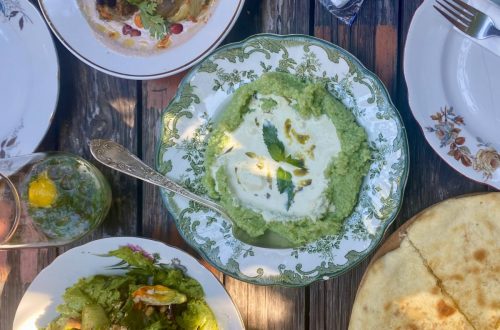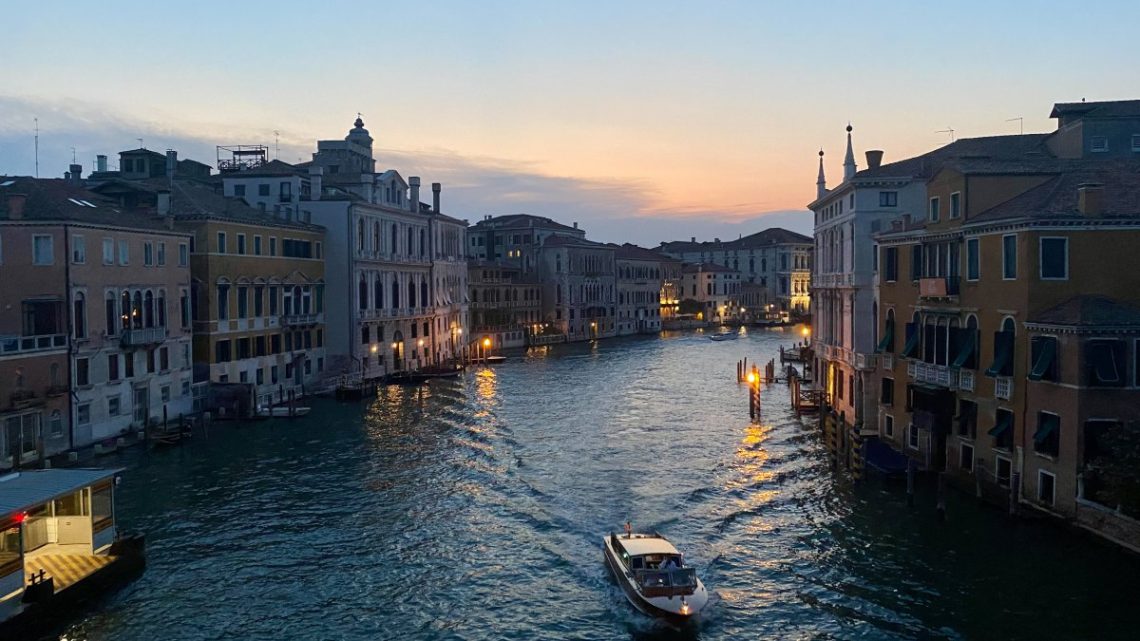
The BEST Things to do in Venice: Discovering Italy’s Floating City
If you are planning a trip to Venice, the city of canals, romance, and architectural wonders, you’re in the right place! Lucky for you, there are countless things to do in Venice – a city that is like a living museum. So, let’s get to know this lovely Italian city, from its fascinating history and culture, to art and delicious Italian cuisine.
A Little Bit of History
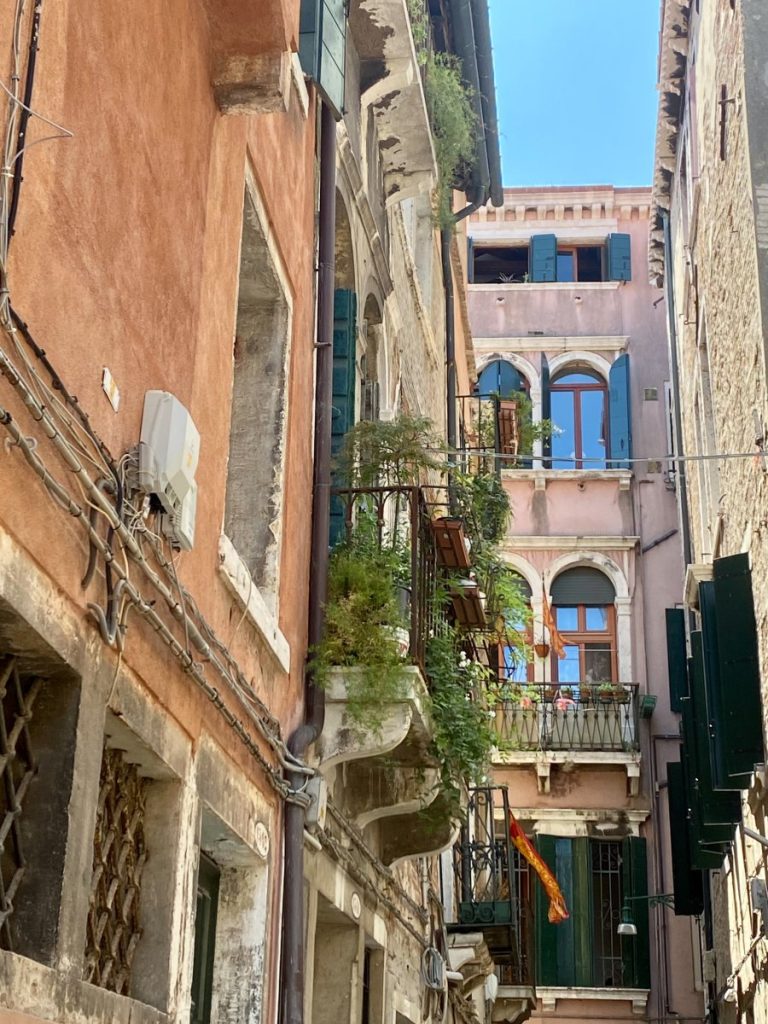
Venice is a city that, without a doubt, has a long past. Let’s start with a fun fact, did you know that Venice was initially a refuge? During the time of invasions (from Lombards, in the 5th and 6th centuries, to be exact), people from mainland Italy fled to the marshy lagoons that would eventually become Venice.
The unique geography offered a safeplace, and as the times of unrest passed, those temporary camps gradually transformed into more permanent settlements. Hence, the birth of Venice.
The early Venetians established themselves as powerful traders and mariners, which led to the city’s rapid growth and prosperity. Venice, at its peak, was a dominant force in the Mediterranean. Between the 9th to 12th centuries, Venice transformed from a cluster of island communities into a bustling metropolis, marked by the construction of its emblematic buildings and canals.
But what of the rise and fall of empires? Ah, as you’d expect, Venice had its share of ups and downs. The city’s decline began in the 13th century when stronger rivals began to emerge. For a time, though, Venice held steady, but the discovery of the New World in the 15th century and the shifting of trade routes to the west was the beginning of the end for Venice’s golden age.
Yet, despite all the odds, Venice endured. Today, Venice may not be a powerful trading empire, but has rather earned its place as one of the most popular and scenic tourist destinations in the world.
Travel Insurance for Italy
One of the first things that has to come to your mind when planning a trip is insurance.
Safetywing’s Nomad Insurance is one of the best options available out there. With a maximum coverage of 365 days, they are a great option whether you are a Nomad or not! They offer very low rates, but excellent coverage and immediate support (in a few minutes!). The best part? Nomad Insurance can be purchased even if you have left your home country already.
Lastly, they also cover extreme sports, something that can come in very handy if you are an adventurous soul.
What is the best time of the year to visit Venice?
Let’s have a little chat about timing, shall we? The experience you get when Visiting Venice can vary quite a bit depending on the time of year you choose to wander around this floating gem.
So, when is the best time to visit Venice? Well, there’s no straight answer to that as it depends on your preference. The majestic Italian city has a different face for each season. Summers are hot, humid, and packed with tourists, autumns and winters bring a completely different vibe, and springs welcome visitors in a more calm and peaceful manner.
Most people would argue for the shoulder seasons – that is, spring (April to June) and fall (September to November). During these times, you’re more likely to see Venice at its best – fewer tourists, more manageable prices, agreeable weather conditions, and of course, the city in its full magnificence.
How many days should I spend in Venice?
Deciding how long to stay in Venice, taking into account all the things to do in Venice, is, in the end, a personal choice. However, I would say that to truly feel and appreciate the spirit of the city, a three to four-day trip would be both excellent and sufficient.
In this time period, you’ll be able to visit all the iconic and must-see sites, have a taste of the delicious local cuisine, explore exciting things to do in Venice, and even try some shopping.
How to Get to Venice
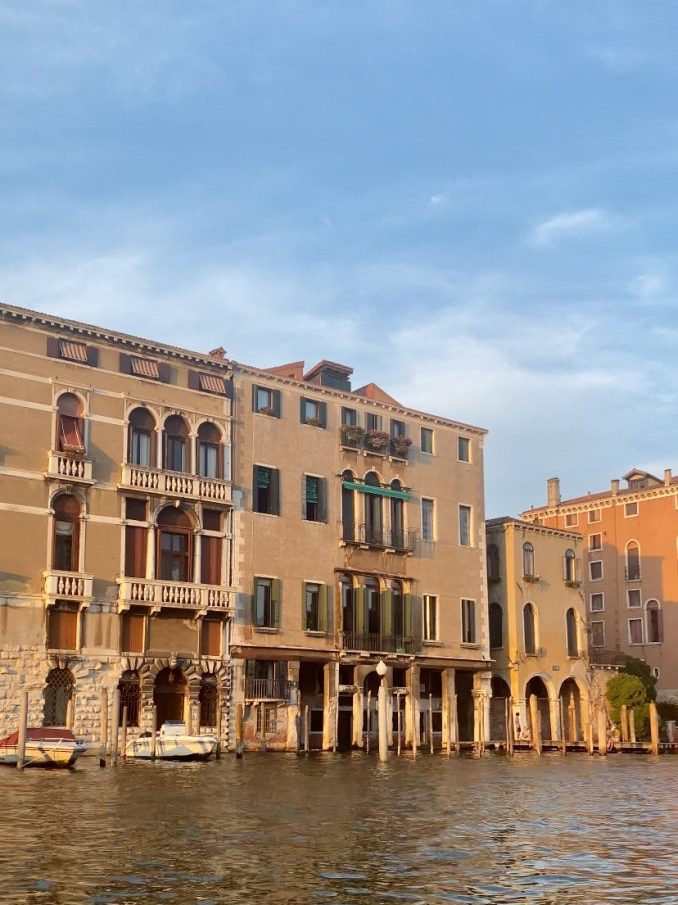
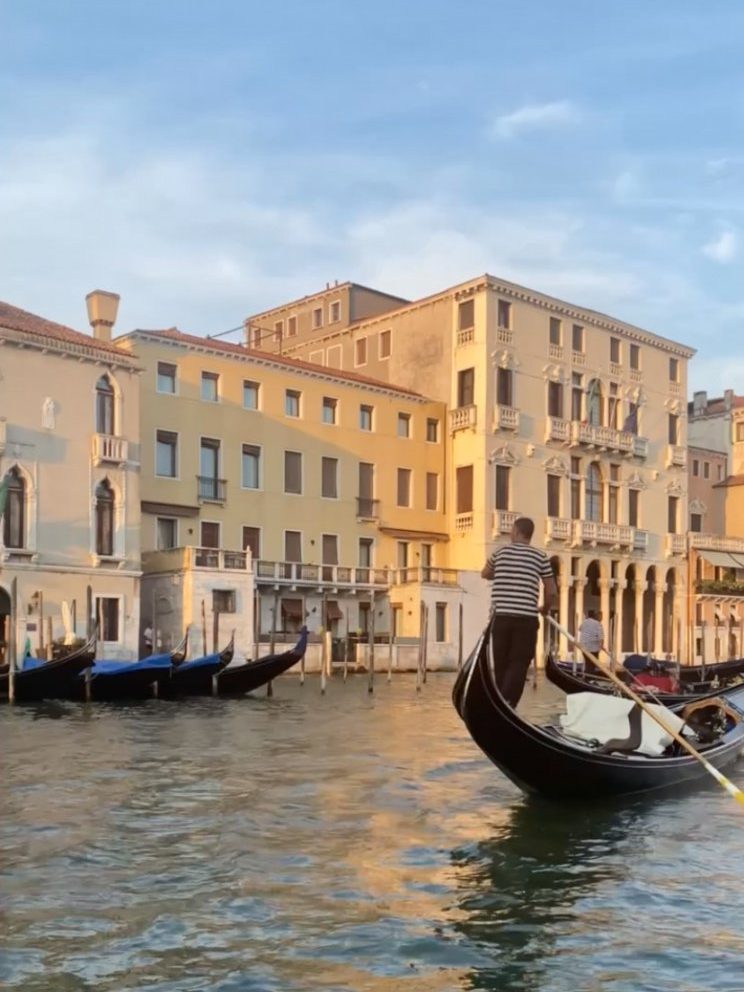
Now, let’s talk about getting there. Most travelers land at Marco Polo Airport, the city’s international airport. Then, you have a handful of options to get to the city.
If you want to start your trip in a more comfortable way, you can use a water taxi. Yes, indeed! A taxi ride on the Venetian Lagoon, taking you straight to the city and letting you enjoy it from the canals. However, keep in mind this might be an expensive way to get to the center.
Looking for a more economical option? Take a water bus, or ‘vaporetto’. Alilaguna is the official public transportation service connecting the airport to the city. While a little less luxurious than the water taxi, it still offers an atmospheric entry into Venice, allowing you to enjoy the lagoon’s beauty as you approach.
For the more adventurous, I would recommend renting a car. However, remember, you can’t drive directly into Venice. You’d have to park at one of the parking garages on the outskirts (like Piazzale Roma or Tronchetto) and continue on foot or water bus.
If, on the other hand, you would like a different experience, or it’s part of a trip across Italy (For us it was part of an Interrail trip), you can travel through train. High-speed trains from other major Italian cities such as Rome, Florence, or Milan offer a different, faster route to the Venice Santa Lucia train station, on top of being an opportunity to admire the Italian countryside. So, how about making the journey part of the experience, too?
Where to Stay in Venice
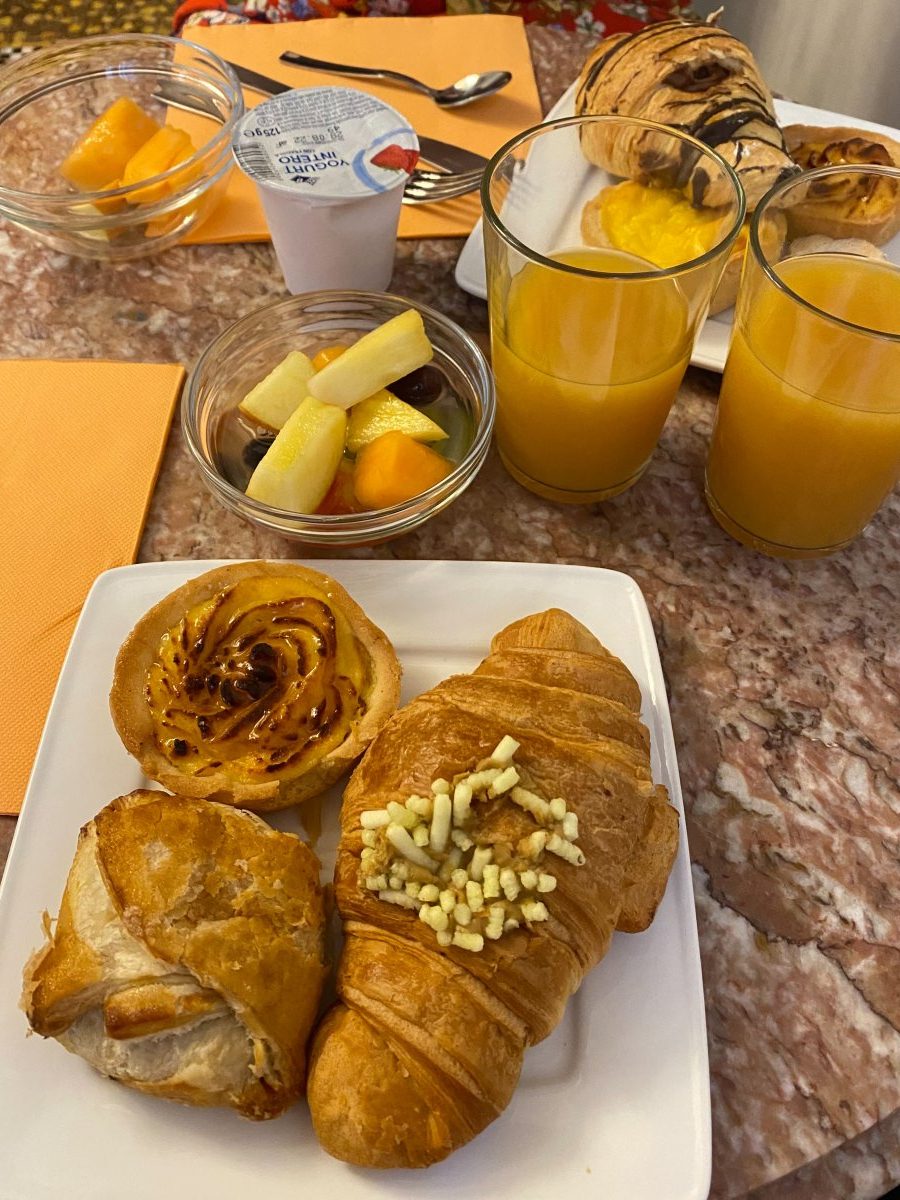
If you’re seeking an authentic, comfortable experience where you can plan your best things to do in Venice, look no further than Locanda Art Deco. Located in the center of Venice—the San Marco neighborhood—this boutique accommodation has everything you might need.
Beautifully designed rooms, comfortable beds, clean bathrooms, and included breakfast (Their pistaccio croissant is GODLY) add further comfort, providing a home-like feel. But what really distinguishes Locanda Art Deco as a perfect base for exploring “things to do in Venice” is the friendly staff. They were always there to help with a smile on their face. Highly recommended!
Moving Around
I assure you, Venice is one-of-a-kind. A city on the water, consisting of over 150 unique canals, Venice is a captivating maze! It’s packed with an abundance of things to do in Venice. Its main form of transportation? Naturally, it’s by water! But, don’t worry, there are other options available.
Firstly, who can speak of Venice without mentioning those iconic gondolas? These traditional, flat-bottomed boats, navigated by the famous gondoliers, are symbols of the city and one of the top things to do in Venice. While a gondola ride might seem touristy (and trust me, it is), it offers something unique – a view of this remarkable city from a different perspective – its canals.
However, gondolas are not the cheapest way to move around (with prices hovering around 80 euros for 40 minutes). Yet, it’s among the key things to do in Venice. A piece of advice: make sure you negotiate the duration and price before taking off – you don’t want a surprise bill!
Public Vaporettos
If you are traveling with a big group, on a budget, or prefer a less ‘touristy’ approach – meet your best friend in Venice – the Vaporetto. These water buses are the public transportation of Venice, with lines crisscrossing the Grand Canal and extending outwards to the lagoon islands.
Though certainly less romantic than a gondola, they offer a practical, efficient, and relatively inexpensive way to get around (single rides cost 7.50 euros, which might be a more affordable price to pay). Plus, they provide a unique, local-like experience!
On Foot
Let’s not overlook walking. Surprised? Venice’s pedestrian-friendly nature might just make it a walker’s paradise. Sure, you might get lost. However, diving into the maze-like side streets of Venice, unexpectedly finding a lovely square or a charming café for a surprise gelato is well worth it! All the canals are connected through bridges, so you’ll have no problem exploring the whole city on foot!
Beware of Google Maps in Venice – the alleys and bridges often confuse the best GPS
| Transportation Mode | Approximate Cost |
|---|---|
| Gondola | 80-100 Euros for 40 Minutes |
| Vaporetto | 7.50 Euros per ride |
| Walking | Free |
What are the BEST things to do in Venice, Italy?
Entering Venice, Italy, feels like stepping into the past. Its narrow, paved streets echo with reminders of its fascinating and romantic history. So, let’s plan a journey through this majestic city, focusing on the important “things to do in Venice” that any visitor should see.
1. Gondola Ride on the Canals
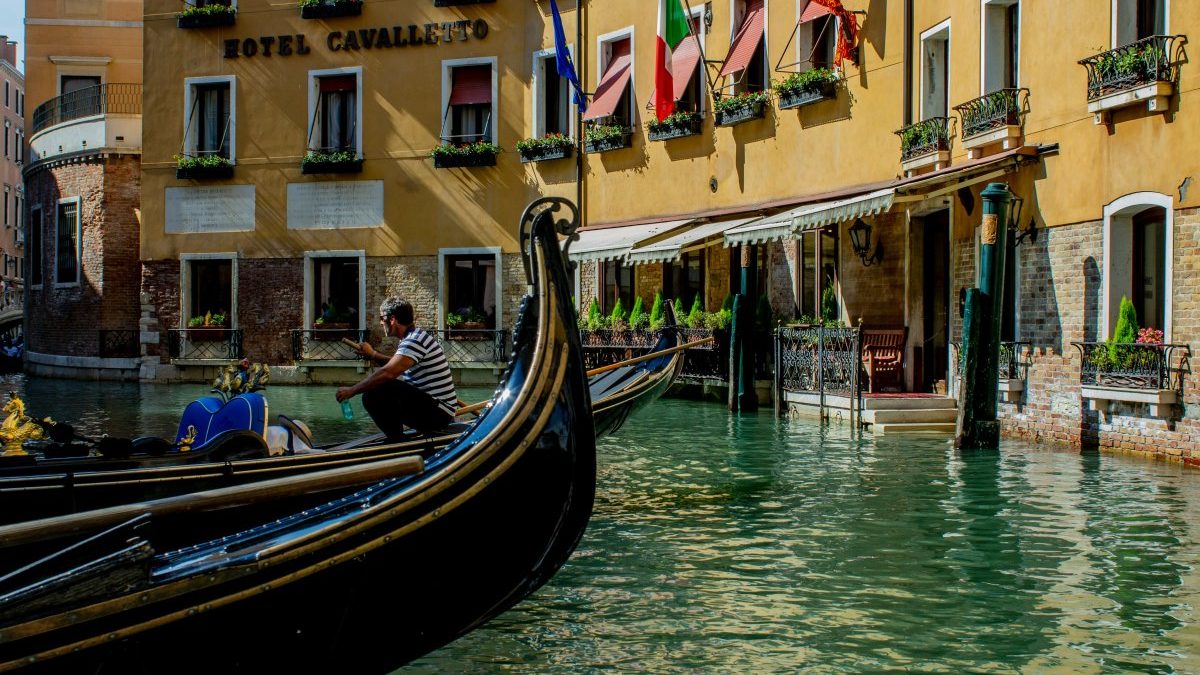
Your adventure through Venice would not be complete without experiencing an iconic gondola ride. These vessels have been the city’s main means of transportation for centuries (who needs cars when you’ve got canals?).
As you pass through the canals on a gondola, you will enjoy the view of Venice’s magnificent architecture, charming bridges, and lively piazzas, all while enjoying the calming aura of the city.
Prices for a ride, though, can be a bit expensive. This classic Venetian experience could set you back anywhere from 80 to 100 euros for a 40-minute voyage. To ensure you’re getting the best deal, remember to negotiate the price before stepping into the boat.
Remember, selecting the ideal gondola is very important, as some canals may feel overcrowded with tourists. However, I recommend the peaceful back canals. You should choose a gondolier in traditional clothing – a striped shirt, black pants, and a straw hat with ribbons. This slower-paced ride allows us to truly appreciate it.
2. Piazza San Marco
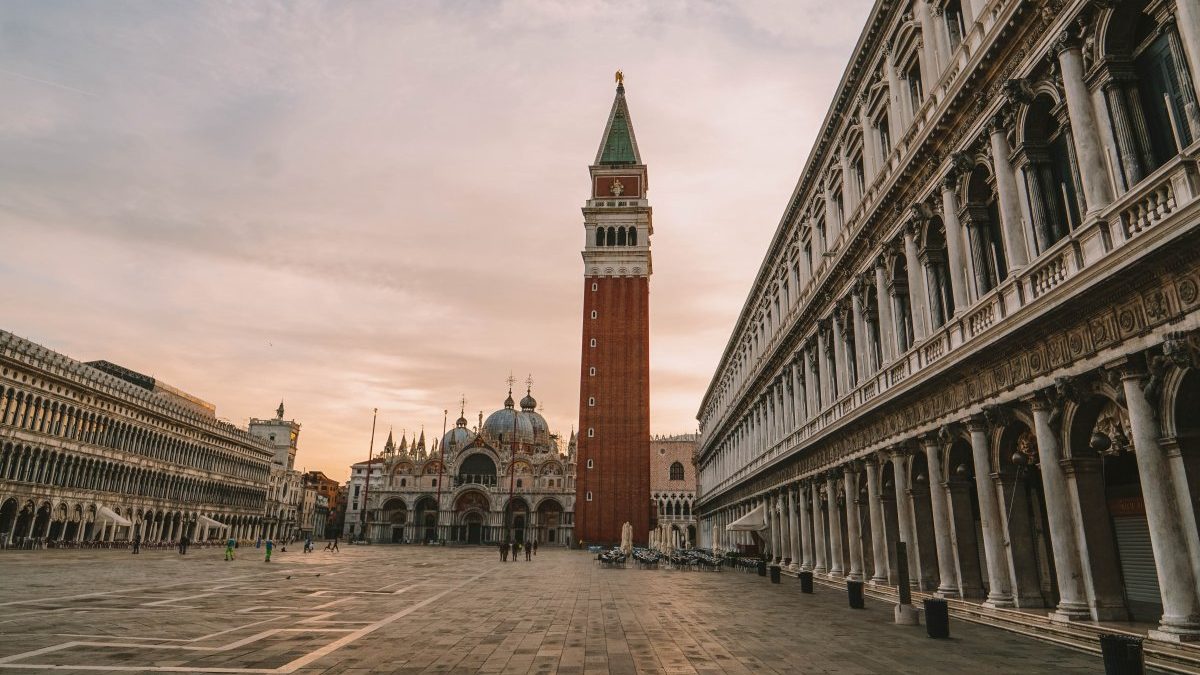
After your gondola ride, make sure to visit Venice’s famous Piazza San Marco or St. Mark’s Square. As one of the world’s most-known squares, it’s filled with majestic architecture, long history, and amazing views- There’s something fascinating in every corner.
If you’re a fan of Italian architecture, Piazza San Marco is your place! True, the square is usually packed with tourists. That’s why it would be better to visit it during the dawn. The square is also a great starting point for boat trips to Venice’s islands.
A quick word of caution: Watch out for steep café prices in the square, especially for simple items like coffee. Always check prices before sitting down! And don’t feed the pigeons, it’s considered unethical and could result in a fine.
3. Saint Mark’s Basilica
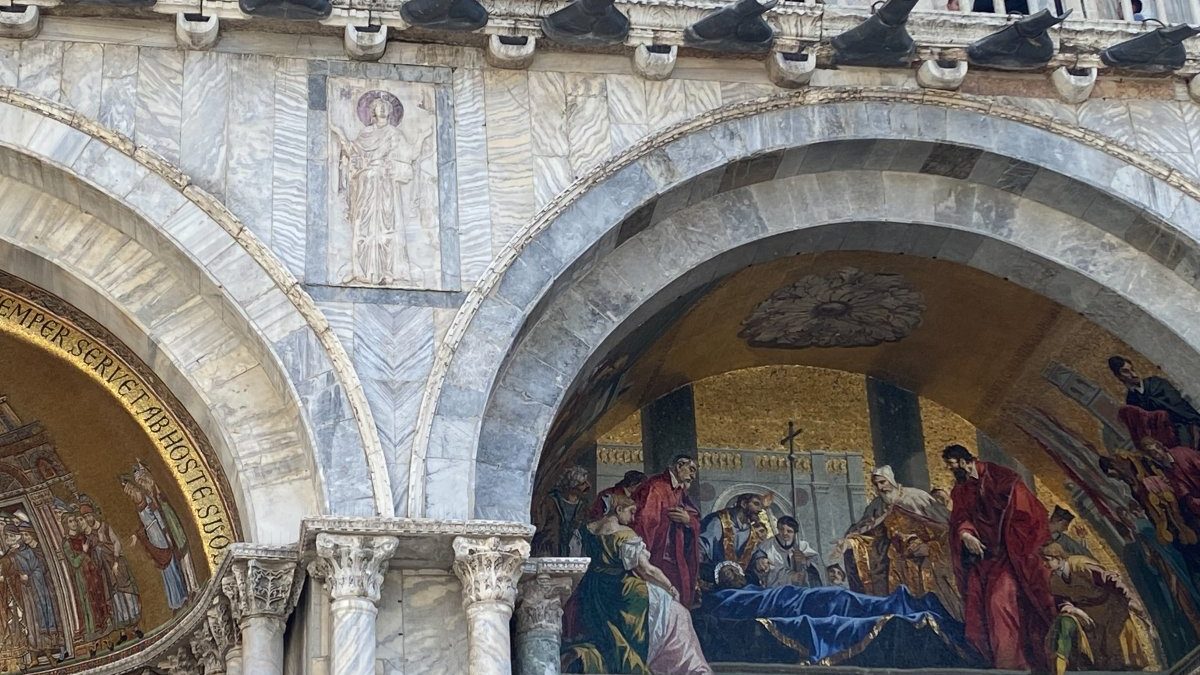
Saint Mark’s Basilica is one of the most iconic landmarks and one of the must things to do in Venice. Located in the St. Mark’s Square, it is a masterpiece of Byzantine architecture and famous for its design and beautiful mosaics.
The history of the Basilica dates back to the 9th century when it was built to house the remains of Saint Mark, the saint of Venice. Over the centuries, the basilica underwent several renovations and additions, resulting in an elegant combination of different architectural styles, including Byzantine, Gothic, and Renaissance.
When in Saint Mark’s Basilica, you can also explore the museum located inside the basilica’s treasury. The museum houses a collection of religious artifacts, including ancient manuscripts, liturgical objects, and relics.
To avoid long queues, iI would recommend to book a skip-the-line ticket or join a guided tour. This will save you time and give you valuable i information about the basilica’s history and significance. I would advise you to check the official website for the latest information on visiting hours.
4. Doge’s Palace
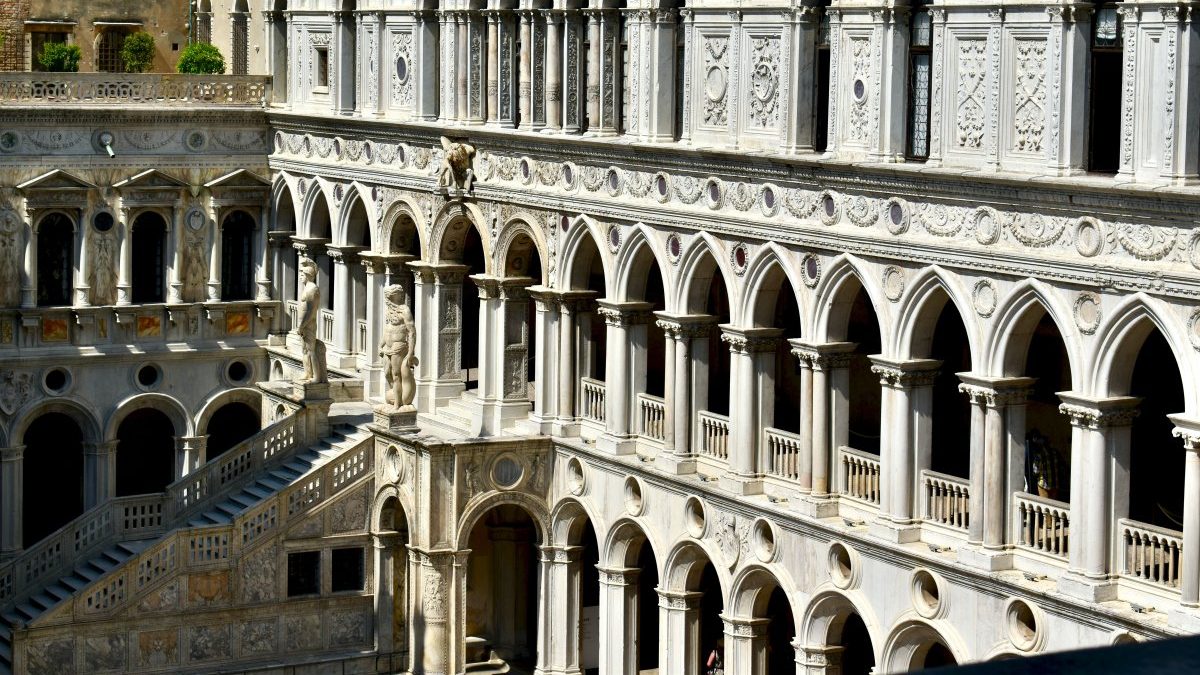
Among the sights you truly cannot miss on your visit to Venice, the Doge’s Palace ranks high, both literally and metaphorically. This Gothic building was an important part of the Venetian government and home of the Doge, the ultimate authority of Venice.
Inside the palace, you’ll discover the Doge’s private living spaces, large council rooms, and masterpieces by artists like Titian and Veronese. It’s well worth it!
5. Rialto Bridge and Market
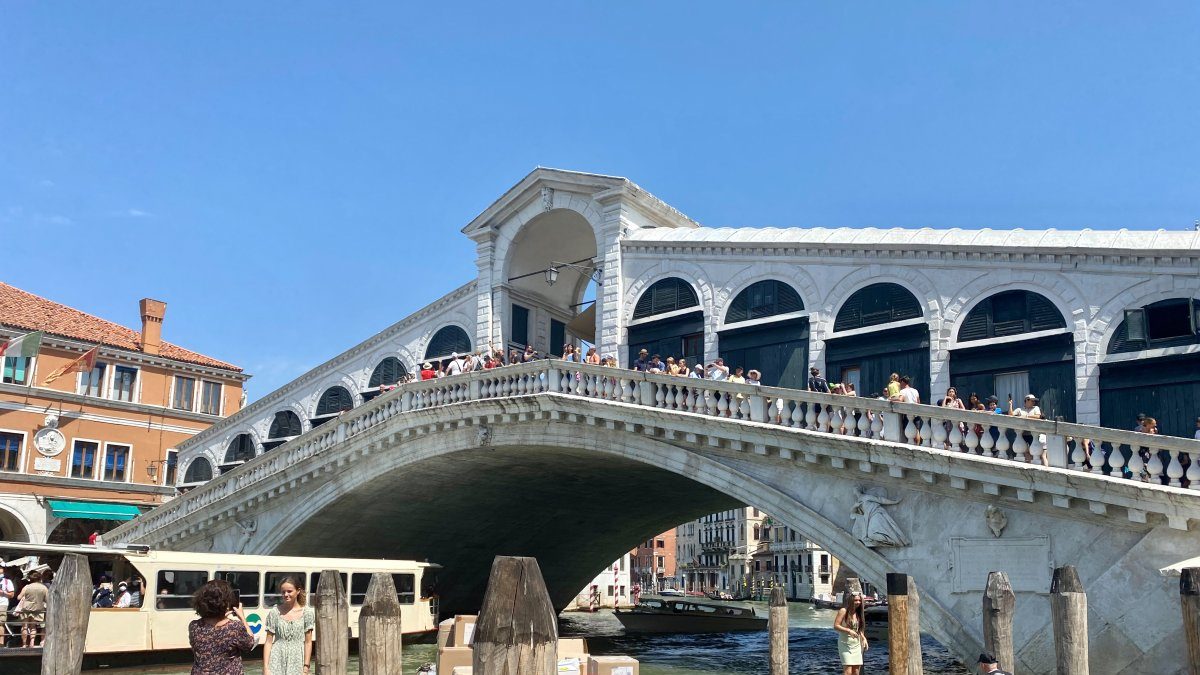
The Rialto Bridge is one of the most famous bridges in the city, located on the Grand Canal and connects the districts of San Marco and San Polo. It was originally a wooden bridge, but due to its importance as a major crossing point on the Grand Canal, it was rebuilt in stone in the late 16th century.
The current bridge, designed by Antonio da Ponte, was completed in 1591. It is famous for its beautiful architecture, its stone arches and steps. It offers stunning views of the canal and the surrounding buildings, making it a popular spot for photography.
The Rialto Market, located near the bridge, is where you can find a wide variety of fresh seafood and other local products. You’ll find the market split into two sections: one for fish and another for fruits and vegetables.
The fish market offers a range of freshly caught seafood from the Adriatic Sea, including various types of fish and shellfish. The fruit and vegetable section, meanwhile, offers a colorful variety of fresh, local produce. It’s surely a great place to live the atmosphere of Venetian daily life.
In addition to its historical and cultural significance, the Rialto Bridge and Market are also surrounded by a lovely neighborhood. The area is filled with shops, cafes, and restaurants, offering a perfect combination of old charm and modernity.
You can take a walk through the narrow streets, wander around the main boutique stores, or enjoy a cup of coffee at a local cafe. The Rialto area is also home to some excellent restaurants where you can savor traditional Venetian cuisine, including seafood dishes and local specialties.
6. The Island of Murano
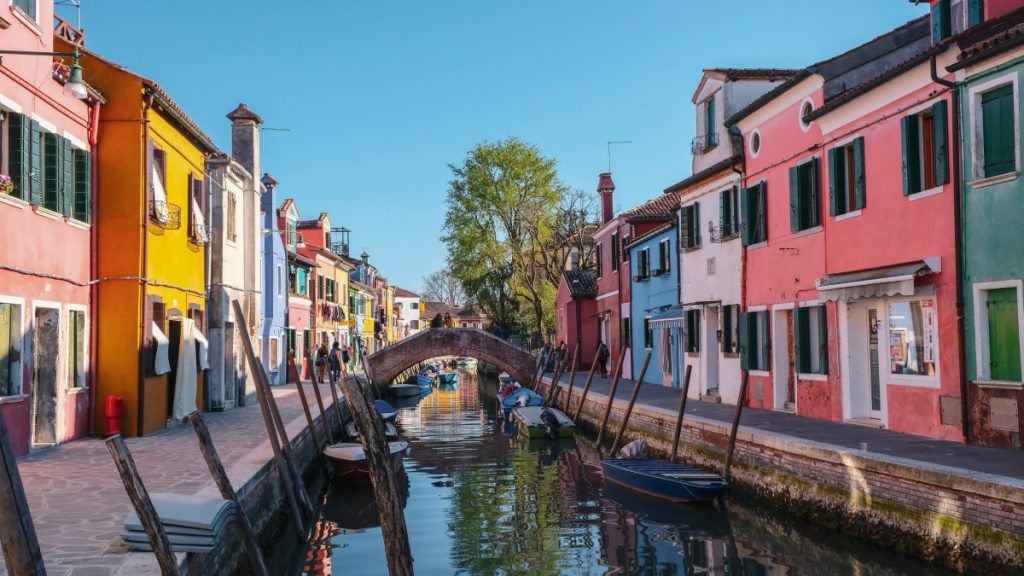
Next thing up your list of places to visit in Venice should be a boat trip to Murano— a small island located just a short boat ride away from the main city.
Murano is famous for its long-standing tradition of glassmaking, dating back to the 13th century. Murano is famous worldwide for its excellent glass products, including glass sculptures, chandeliers, and jewelry.
While there, you can walk around, see the lovely houses and neighborhoods, or explore the island’s glass factories and watch artists create beautiful glass pieces using traditional techniques. Murano glass is actually still considered one of the finest in the world!
To reach Murano, you can take a vaporetto from various parts of the city, including the Fondamenta Nuove and the San Zaccaria waterfront. The trip takes approximately 10-15 minutes, and vaporettos run regularly throughout the day.
7. Peggy Guggenheim Collection
Art lovers, this one is for you! The Peggy Guggenheim Collection is an art museum. It is housed in the Palazzo Venier dei Leoni, an unfinished 18th-century palace that was once Peggy Guggenheim’s (an American art collector) home.
The collection is dedicated to modern art and features works from world-famous artists such as Picasso, Pollock, and Dalí. It is actually considered one of the most important museums of European and American art of the 20th century and is surely one not to be missed!
8. La Fenice Theatre
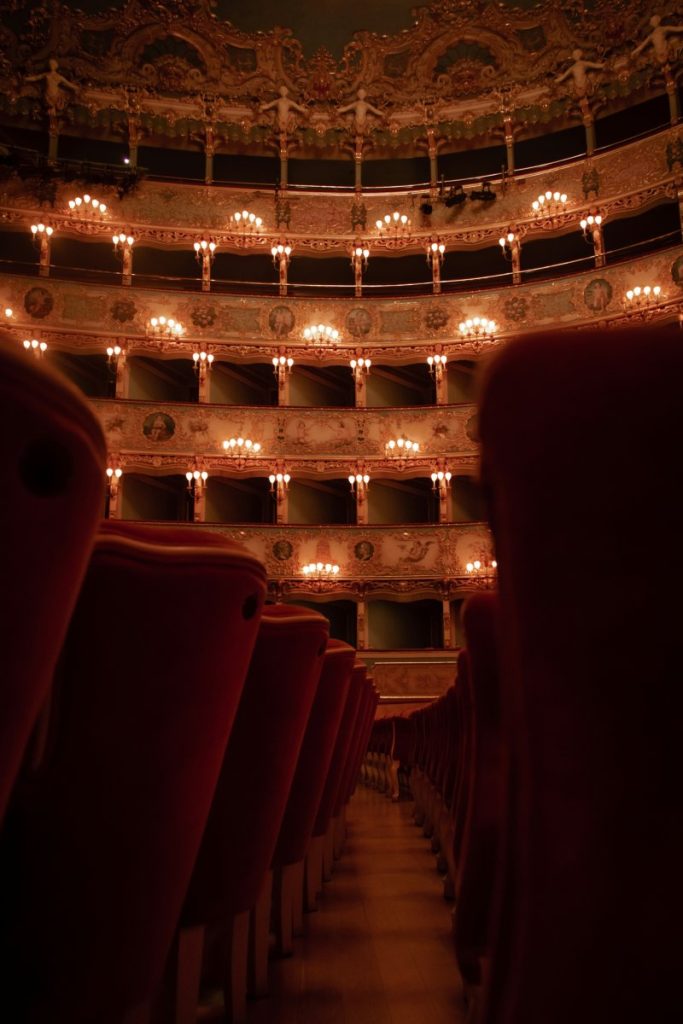
Now, how about a night at the opera? La Fenice Theatre is one of the most important theaters in the entire country! It has played a significant role in the development of opera and has hosted performances by some of the greatest opera singers and conductors in history.
It still continues to be a prestigious venue for opera, ballet, and classical music concerts. As part of your trip to Venice, you can experience its magic by attending a performance or taking a guided tour of the theater. During the tour, you’ll learn more about its architectural features, backstage areas, and the fascinating stories of its past.
9. Libreria Acqua Alta
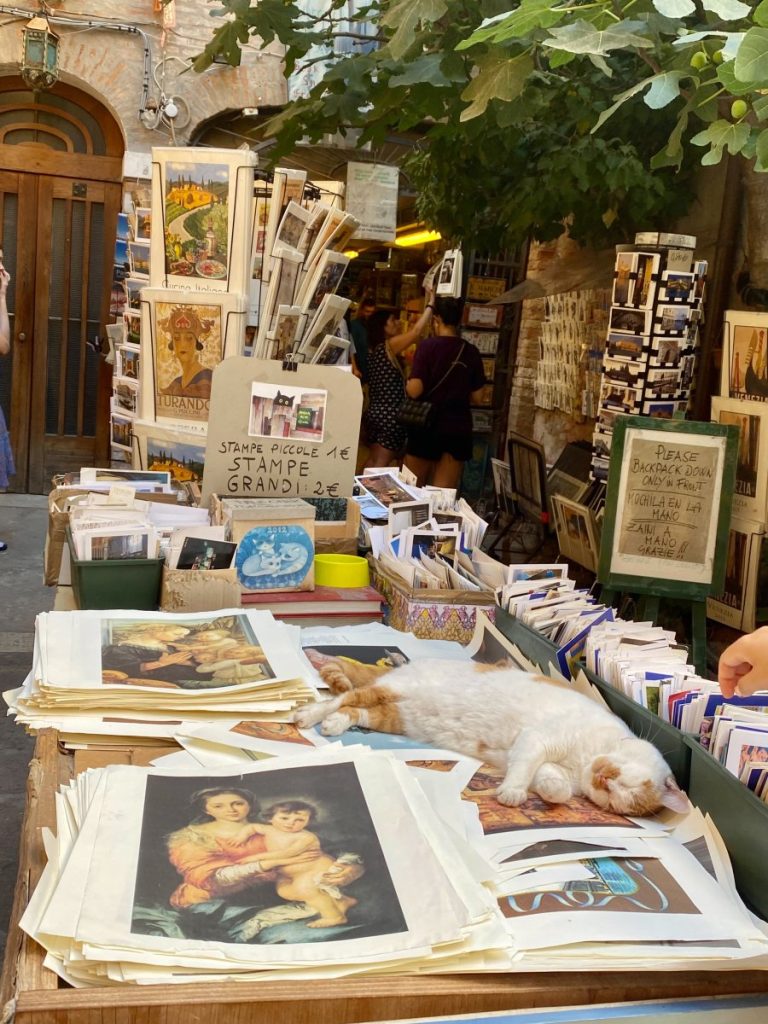

Libreria Acqua Alta is one of the most unique bookstores in the world. It is known for its unconventional design, making it a popular attraction for tourists and book lovers alike.
The bookstore is also famous for its creative displays, which include books stacked in gondolas, bathtubs, and even a full-size gondola inside the shop (you can get into it and take photos!).
One of the most interesting features of Libreria Acqua Alta is its use of books as a means of protection against flooding. The bookstore is situated in an area that is frequently affected by high tides, and the owner has come up with a unique solution to keep the books safe.
Instead of using traditional bookshelves, the books are stored in bathtubs, waterproof bins, and even a large gondola. This not only adds to the charm of the bookstore but also ensures that the books remain dry and undamaged during periods of high water.
There, you can browse through a wide selection of books, including novels, art books, travel guides, and more. The bookstore specializes in books about Venice and its history, making it a great place to find unique souvenirs or gifts.
In addition to its impressive book collection, Libreria Acqua Alta also offers a unique experience for visitors. At the back of the bookstore, there is a staircase made entirely of books, which leads to a small courtyard overlooking a picturesque canal. It is the perfect spot to enjoy a good read while surrounded by the canals of Venice.
10. Take Part in the Venice Carnival
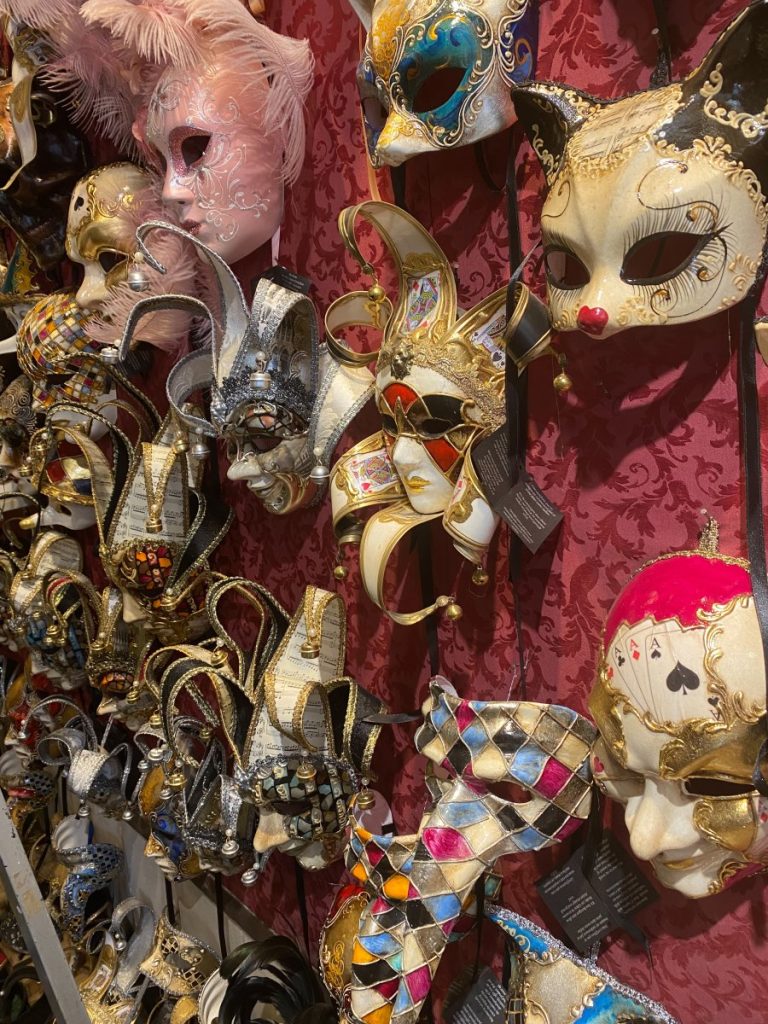
If you’re lucky enough to travel to Venice during the carnival season, which usually takes place in February, you are in for an experience of a lifetime. The Venice Carnival is a centuries-old tradition, dating back to the 12th century.
Imagine a city dressed in its finest, a city that amazes with its unique colors and creativity, where everyone becomes a form of living art. It’s a unique cultural experience, that not many other places in the world can offer.
Now, imagine yourself as part of that spectacle. Wearing a traditional Venetian mask is not just allowed, it’s expected. In fact, the mask-making tradition is a significant part of the Venice Carnival.
Often, vendors set up pop-up shops selling all kinds of masks, from simple, traditional designs to the more elegant ones. They are the perfect souvenir to bring back home! In fact, there are many workshops around the city that sell handmade masks all year round. The mask I got from my trip to Venice is maybe one of my favorite memorabilia from all my travels!
You should also attend the grand balls, usually hosted in the palazzos around Piazza San Marco, or if the budget allows, the Doge’s Ball, a true step back into Venice’s past. Can you think of a better way to create unforgettable memories?
Now, here’s the thing – the Venice Carnival is very popular. As such, good planning is a must. Ticketed events, such as the Grand Masquerade Ball, sell out quickly, so it’s wise to book ahead.
Want to avoid the hustle and bustle? You should choose the quieter celebrations in Venice’s plazas and squares where locals prefer to gather. Before you go, make sure to check out the city’s official carnival program for a schedule of events.
11. Bar-Hopping

You haven’t really experienced Venice if you haven’t tried the local bar culture. Venice is actually famous for its Aperol Spritz – a blend of Aperol, Prosecco, and soda. It is the perfect way to finish a day of exploring. You’ll be glad to know that it is very cheap, too.
A few suggestions: Start at Al Volto, known for its careful selection of wines, before making your way to Al Merca, a small but charming bar. Also, make sure you don’t miss out on Osteria Al Squero, whose spritz and cicchetti (local tapas) are excellent.
What are the top neighborhoods to explore in Venice?
Venice, packed with things to do, is divided into six main neighborhoods, or sestieri, each with its own character and attractions. The top neighborhoods to explore in Venice, with an abundance of things to do, are San Marco, Cannaregio, Dorsoduro, San Polo, Santa Croce, and Castello. Each neighborhood offers a different experience and shows different aspects of Venetian life and history.
San Marco is known as the heart of Venice, home to iconic sights like Piazza San Marco and the majestic Saint Mark’s Basilica. There, you can explore luxurious boutiques, world-class museums, and plenty of historic sights, all within walking distance. More information can be found at Venice Tourism – San Marco.
Cannaregio, the largest of the neighborhoods, offers a taste of the authentic Venetian life, away from the main tourist attractions. The Jewish Ghetto, located here, is a place of fascinating history. The official website Jewish Venice is where you can find more information on this historical place.
Dorsoduro is the city’s art district, housing the Peggy Guggenheim Collection and the Accademia Gallery. It’s a residential area filled with instagram-worthy canals and quiet streets – perfect for those who want to escape the crowds. More details can be found on Venice Tourism – Dorsoduro.
San Polo, the smallest sestieri, reveals a different side of Venice with the lively Rialto Market, historic churches, and rustic trattorias. Check out Venice Tourism – San Polo. for more information.
Santa Croce, a less-visited area, is an intriguing blend of the traditional and contemporary. Explore historic palaces and paradoxically modern urban scenes. For further details, visit Venice Tourism – Santa Croce.
Lastly, Castello is a mariner’s quarter home to the impressive Venetian Arsenal. With its large local population, this place offers a slice of authentic Venice and a break from the tourist hustle. Investigate further at Venice Tourism – Castello.
What is the local cuisine like in Venice?
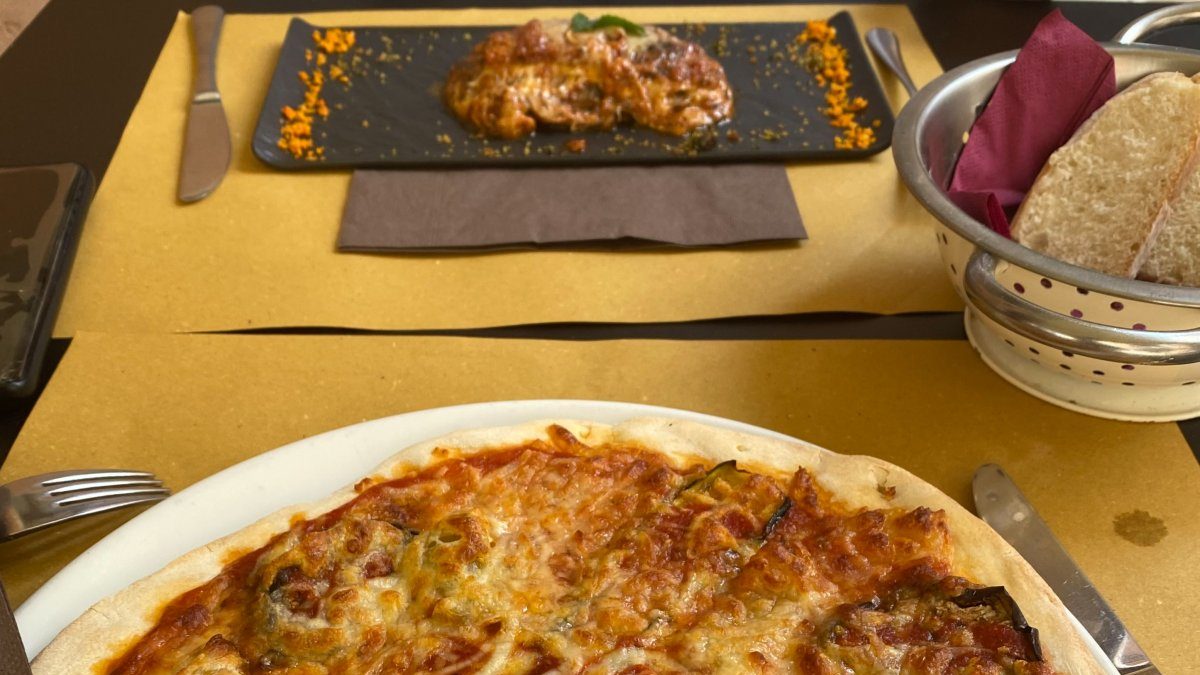
The unique character of Venetian cuisine, a mix of flavors and influences from both land and sea, has to be experienced when considering the things to do in Venice. As a city built on water, seafood plays a significant role in the local gastronomy.
You can expect to find a wide variety of fresh fish and shellfish dishes, such as sarde in saor (marinated sardines), baccalà mantecato (creamed cod), and risotto al nero di seppia (squid ink risotto). The Venetians also have a love for polenta, a cornmeal dish that is often served with hearty stews or as a side to fish or meat dishes.
Another iconic dish in Venice is the cicchetti, which are small bite-sized snacks typically enjoyed with a glass of wine. These can include a variety of ingredients such as marinated vegetables, cured meats, and seafood.
Venice is also known for its sweet treats. One of the most famous is the Venetian carnival cake, called frittelle. These are small, fried pastries filled with cream, raisins, or other sweet fillings. Another delicious dessert is the world-famous tiramisu, a coffee-flavored dessert made with layers of ladyfingers dipped in coffee and mascarpone cheese.
Gelato, the Italian version of ice cream, is also widely available and a perfect treat to enjoy while strolling through the city’s picturesque streets.
I would definitely recommend to visit SUSO, one of the most populars ice cream places in the city. It became famous a few years ago through TikTok, and is home to some of the best ice cream I’ve ever had! Queues can be quite massive, but it’s worth the wait.
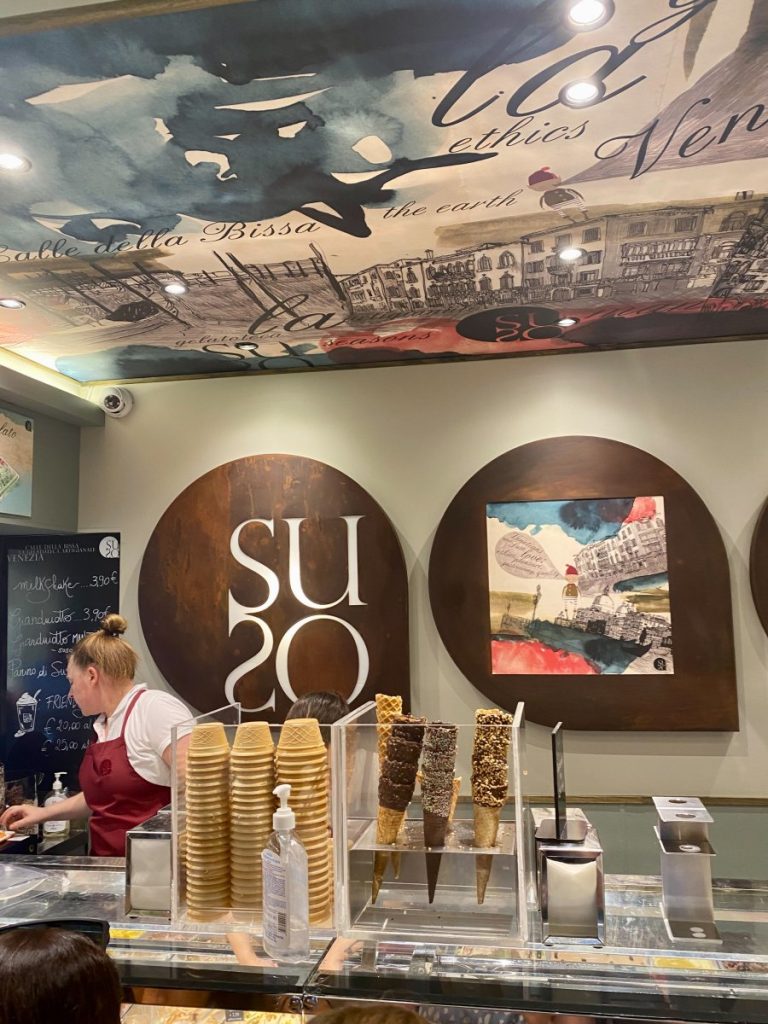
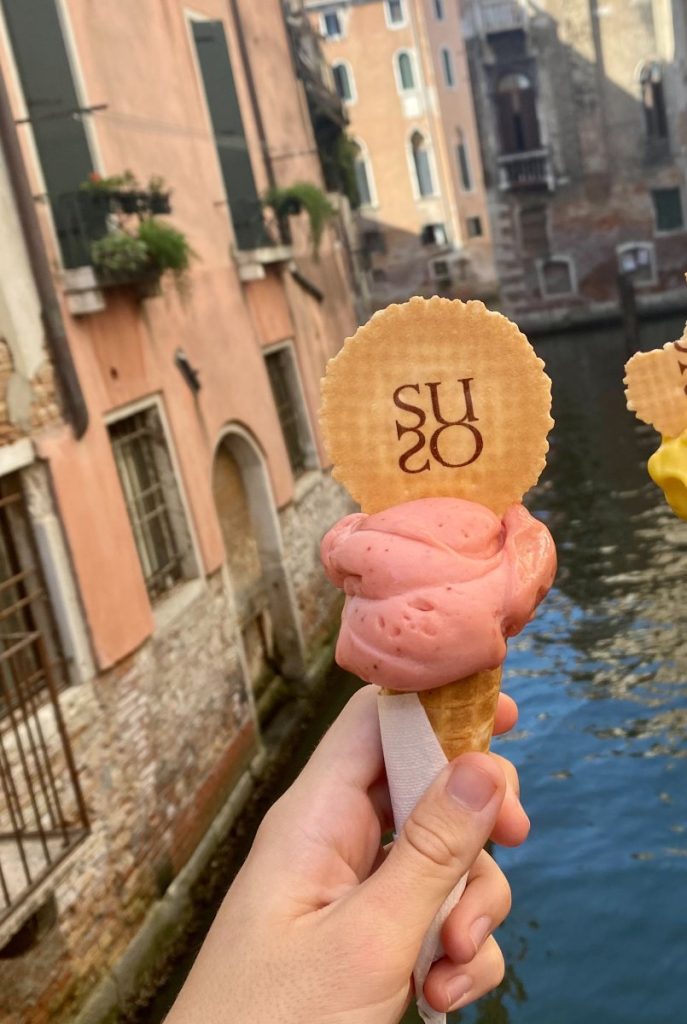
What are some tips for avoiding crowds in Venice?
It would be normal to imagine that, with the so many things to do in Venice, the city would also hold the title of one of the most popular tourist destinations in the world. With this title comes an inevitable truth – crowds. So, how can you really enjoy your trip without feeling claustrophobic from the hordes of people?
Your first line of defense is timing. The first and last few hours of daylight tend to be the least crowded. These times are perfect for peaceful walk through the city’s streets, and (bonus!) the light is ideal for capturing those Instagram-worthy shots.
Next, try avoiding the main tourist routes. Yes, the Grand Canal is breathtaking, and the Rialto Bridge offers an amazing view of the city – but there’s more to Venice. Try to build your own unique path through the less-known neighborhoods. For instance, Cannaregio and Castello are less frequented by tourists but offer just as great of an experience of Venetian life.
Lastly, visit during the off-season. Yes, it’s true that floodings are more likely to occur during these months; however, it’s also true that there are far fewer tourists, which means less crowded attractions and more space for you to explore at ease.
Final Thoughts
Venice is, without question, an extraordinary place to visit. It’s brimming with incredibly rich history, a lively culture, and breathtaking architecture, not to mention the truly exciting canals. All these aspects contribute to the many, many of things to do in Venice.
Don’t just aimlessly switch from one tourist-filled spot to another. Find the hidden gems, the best bacari (those delightful small bars), the best art workshops. Stop frequently, look around, absorb the city, its culture, and its people. Be a traveler, not just a tourist.
In the end, remember to be a responsible traveler. Venice has serious problems with overtourism, and it shows visible scars. Respect the locals, their lives, their city. Don’t contribute to the deterioration of their homes and livelihoods. Let this be the final message of this article.



